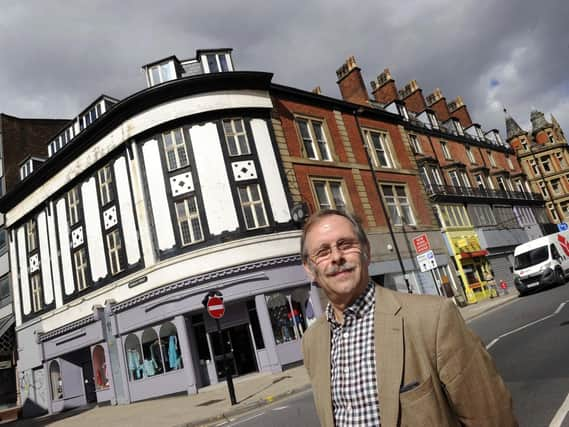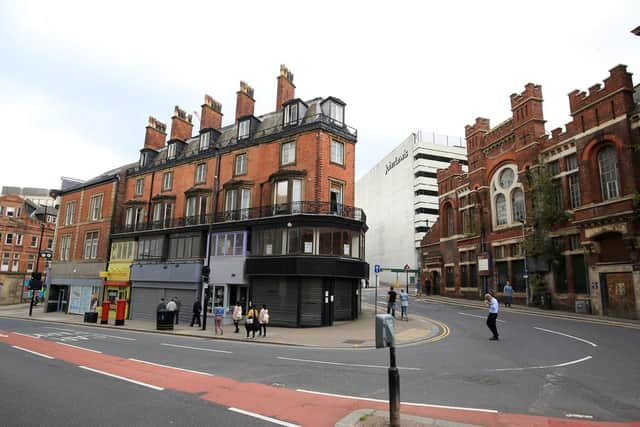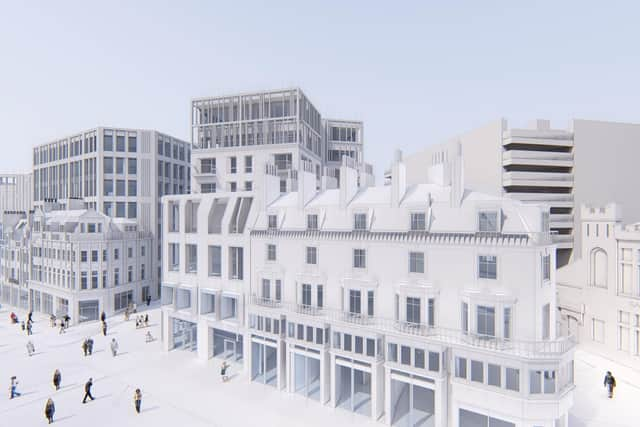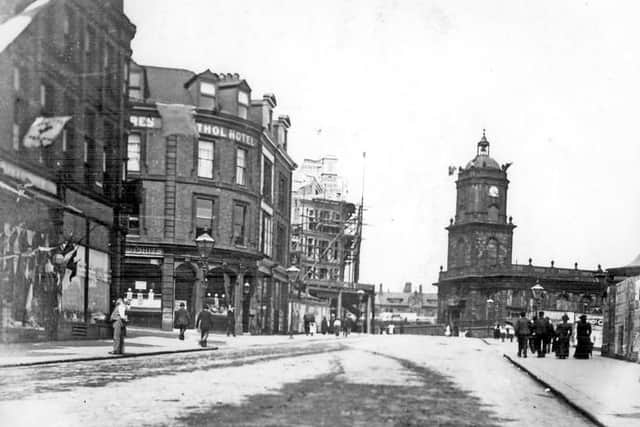The story of Sheffield's Athol Hotel: '˜This is where the Sheffield we know today begins'


"Right here you've pretty much got a microcosm of Sheffield's transition from a town with ambition to a city with prospects,' he says.
Here are imposing Victorian buildings, created at a time when council bosses wanted to foster a new, assertive mood '“ an aim that chimes with the modern Heart of the City II redevelopment plan that will bring shops, offices, apartments and more.


Advertisement
Hide AdAdvertisement
Hide AdAs part of the £500 million scheme, the historic appearance of Pinstone Street is to be preserved, including two existing blocks '“ Laycock House and the Pepper Pot '“ that lead down to The Moor.
But, next to the Laycock building, one element is to go, it is feared. The Athol Hotel, which dates from the 1880s but is marked out by its mock Tudor cladding added in the 1920s, faces demolition if artist's impressions are to believed '“ and retired IT expert Robin believes it should be retained just like its neighbours.
'The council and their developers always had a bit of a blind spot where this is concerned, to the extent they don't really even mention it,' says Robin, who grew up in Sheffield and has a passion for its heritage. 'I've never seen any written justification for demolishing it.'
And the former hotel, now home to a clothes shop on the ground floor, has a part to play in a wider story. Pinstone Street, he explains, was altered in the late 19th century; up to then it had been '˜quite a narrow lane'. 'It was quite a humble place. You'd got shops, butchers, a firework maker '“ that kind of thing. Just like they are today, the council had dreams of creating a much bigger, better, more prosperous place.'


Advertisement
Hide AdAdvertisement
Hide AdAbove all, Robin says, the council wanted buildings of a '˜suitable stature' '“Â a new line was cut down to Moorhead, created as a new public space. 'They buy up lots of land and start redeveloping the old premises. This is a familiar story '“Â then the recession hit.'
The Long Depression stretched from 1873 to 1896 '“Â the council pressed ahead with its idea to boost the local economy, parcelling up land to sell, but auctions went badly. Only two plots were bought '“Â William Henry Brittain, an ex-Master Cutler, bought the prominent site where the Pepper Pot now stands, and Henry Bacon Atkinson, a 29-year-old property speculator, took land on the corner of Charles Street for the Athol Hotel, completed in December 1883 with designs by architect W F Ragg.
The venue got off to a good start. In May 1884 the Sheffield Football Association held a dinner there for victorious teams, and the Sheffield Cricket Association was formed on the premises two months later. In 1935, about eight years after the mock Tudor refurbishment, a 120-seater '˜Jubilee Super Modern Lunch and Supper Lounge' was added upstairs.
The hotel was, Robin thinks, Pinstone Street's first enterprise and first success. 'It's the kind of place your local societies would repair to for a convivial evening of impromptu amusement. It certainly operated right up until the second world war, probably some time after.'


Advertisement
Hide AdAdvertisement
Hide AdIt was eventually joined next door in 1896 by Laycock House itself, a development of '˜better class dwellings' that survives more or less intact. 'You can see there's a big message there '“ confidence, showiness.'
What remains '“ including the fantastical Salvation Army Citadel, which is being revamped separately '“ is an unrivalled collection of architecture from the period, Robin says. 'There are no late Victorian frontages of this length, with this degree of fanciness.'
A little more investigation could prove the Athol's value, he suggests. 'It's at least possible that behind that mock Tudor cladding exists the original Victorian facade. Even with that repainted it would look quite fine, and it's been a Sheffield landmark looking like that for nearly a century. But if behind it there's a Victorian frontage I think that would really make it a bit of a find.'
Heart of the City II is the successor to Sevenstone, the '˜new retail quarter' that stalled when the financial crash hit and was dropped when the council parted ways with developer Hammerson. Discussions about an extensive overhaul of the city centre first took place 20 years ago '“Â Robin points out that the entirety of Pinstone Street opposite the Peace Gardens was accomplished within 14 years.
Advertisement
Hide AdAdvertisement
Hide Ad'If you think about it, we've actually been talking about the new retail quarter for longer. They're calling it Heart of the City II now, and in a sense I see this as the true heart of the city,' Robin says, indicating the Athol Hotel. 'This is where the Sheffield we know today begins. This is where the town of Sheffield takes its first faltering steps to becoming a city in the middle of difficult economic circumstances.'
Robin's stance is shared by the Hallamshire Historic Buildings society, which drew attention to the Athol's plight a decade ago. Submissions calling for a rethink on the hotel are being sent to the council as part of a public consultation. Planning applications are expected to be lodged in October.
'We're starting to hear much nicer noises from the council, I think they've moved a long way,' he says. 'It's engaging much more positively with the heritage community.'
Is there a chance it could be saved?
'Yes. Chance in the sense there's a good case to be made. You need the old and the new. Sheffield is a great city for acquiring adherence '“ people who come here and stay. They become part of the story. That's why I think the story of the buildings, and the story of the people behind them, is so important.'